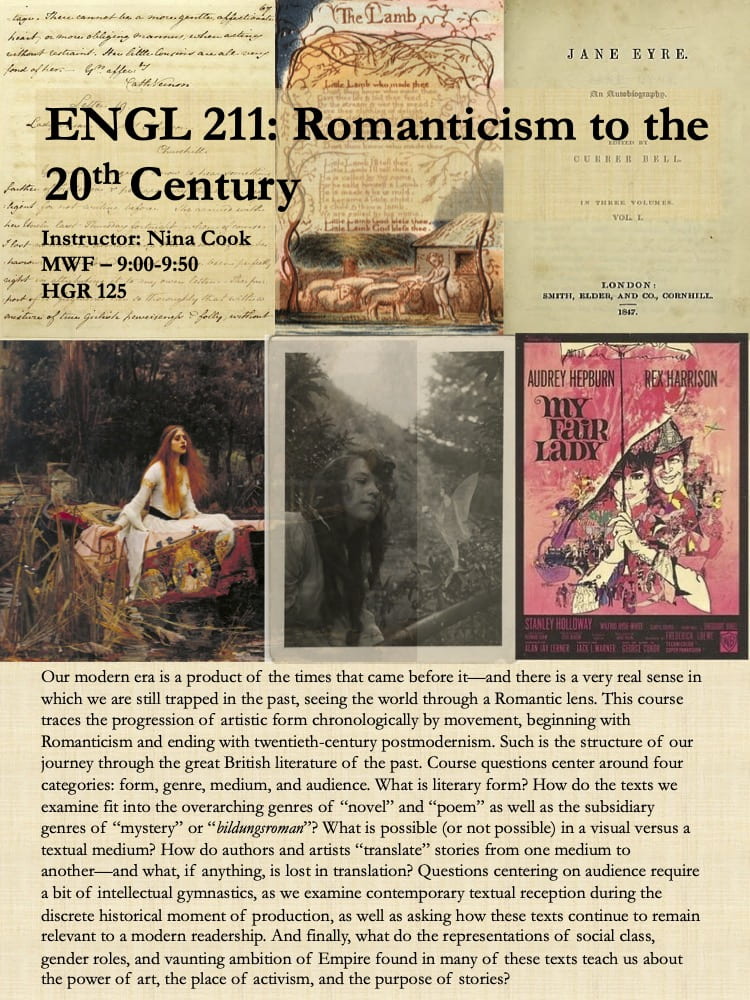Nina Cook is a Ph.D. Candidate in the English Department at Rice University. She studies innovations in representation in visual art and literature from 1760-1880 and asks how techniques of representation in painting and novel writing mirror one another. Her fields of study are Romanticism, the Victorian novel, visual culture, gender studies, and the history of optics.
Course Description:
| Our modern era is a product of the times that came before it—and we must understand the past to untangle the present. This survey begins in the era scholars of literature call “Romanticism.” The poetry and prose of William Wordsworth and Samuel Coleridge serve as an introduction to the literary and social aims of the Romantic Movement. We will then move on to the Gothic Movement, reading Northanger Abbey, a novel that both participates in and critiques common elements of Gothicism. Next comes the Victorian era, where we will read Jane Eyre, a novel that bridges the divide between Gothic (or more fantastic) literature and the Realism prized by many Victorian authors. The next movement we examine on our journey through British Literature is the Decadent (or Aesthetic) Movement, a reaction to the overt moralism of much Realist fiction. Finally, after traipsing through the fin de siècle, Modernism proper arrives on the scene with a curated smorgasbord of literary delights, including poetry, short stories, and essays. The course ends with a postmodern novel by Jean Rhys which links back to Jane Eyre and provides a creative preface to the events laid out in Brontë’s literary classic.
Such is the structure of our journey through the great British literature of the past. Artistic artifacts allow us to see the thought patterns, values, and preoccupations of the people of the past, and we will examine these artifacts, whether they be novels, poetry, essays, paintings, or films, with an eye towards their historical and social context. This requires a bit of intellectual gymnastics, as we examine the reception of these texts during their discrete historical moment (often through contemporary reviews) as well as ask how they remain relevant to a modern audience. A special emphasis will be placed upon the place of hybridity and experimentation in the Romantic era and on into the Victorian and Modern periods. We will ask questions about representation—both visual and textual—and adaptation. How do authors and artists “translate” stories from one medium into another? Stories were often adapted from the prose novel to the Victorian stage, for instance, or from the Victorian novel into modern film—what, if anything, is lost in translation? And what does the attention to social class, gender roles, and the criticism of the expanding British Empire found in much of the literature we will read teach us about the power of art, the place of activism, and the purpose of stories? |

